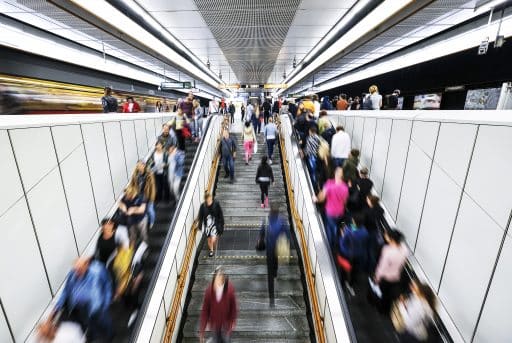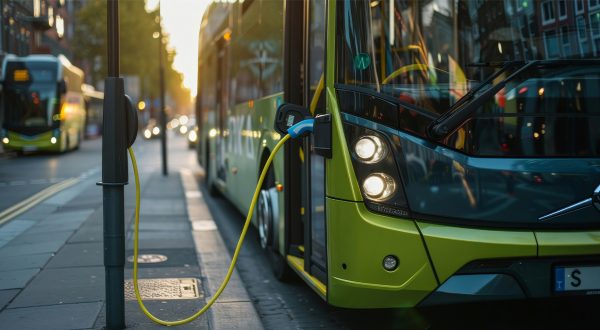Tested successfully during the Euro 2008 championship in Vienna, the system regulating the flow of passengers towards underground trains on match nights combines sensors and data-driven sliding doors.

The massive outflow of tens of thousands of spectators from a football stadium after the final whistle is a difficult case study for the authorities and particularly for public transport managers. The funnel effect that occurs at the entrance to underground platforms is a major concern. And pushing and shoving can present serious safety problems, compounded by the proximity of the tracks. This reduces both passenger comfort and the efficiency of the network, which is slowed down by long boarding and alighting times.
In order to solve the problem and improve passenger flow, the underground system in Vienna, Austria, successfully tested a solution designed by the Austrian Institute of Technology (AIT) and implemented by Cegelec City Solutions, a VINCI Energies subsidiary.
Dividing the crowd
The principle selected goes further than traditional systems that involve guiding crowds towards trains. First, because even if signage limits the amount of pushing that takes place before getting to the platforms, it does not solve the issue of the bottlenecks that occur as passengers board the train. And second because it has been observed that passengers pay little attention to instructions on displays when caught up in the movement of the crowd.
Adapting passenger numbers to train capacity by dividing the crowd thanks to a computer-aided crowd control system.
The Austrians therefore decided to adapt passenger numbers to train capacity by dividing the crowd using a computer-aided crowd control system.
“Stadion” station, on line U2, which serves the Ernst Happel football stadium, was fitted out in 2008 for the Euro football championship with passenger-counting and sliding-door systems, which reduce the number of passengers allowed onto the platforms. Some 25,000 people use the station after a match or concert.
“Meanders” and sliding doors
Thomas Knorr, project manager at Cegelec City Solutions, and Stefan Seer, senior scientist at AIT, describe the system: at the end of a match or concert, spectators first take the meanders (a type of corridor) to enter the ground floor of the station. This ensures that crowd pressure is contained outside.
The meanders lead to four sliding doors. The width of the door openings varies to ensure that only the number of passengers that fit on the next train can access the level where the platforms are located. Passengers are counted by sensors in the stairway providing access to the platforms.
The programme managing these flows incorporates the information supplied by the sensors in real time and correlates it with the historical behavioural data collected by Wiener Linien, the public transport operator.
During the design stage, says Thomas, “this data populated various scenarios that were programmed into simulation software, enabling us to identify potentially hazardous situations and areas for passengers.”
After 9 years of smooth operation and a considerable number of football matches, “the method has more than proved its worth,” believes Stefan. “The performance of the crowd regulation system has shown that it is highly reliable and efficient.” This efficiency can be summed up as follows: during the Euro in 2008, 44% of the public took the underground after each match, and 22,000 spectators got home in under an hour.
13/02/2018


